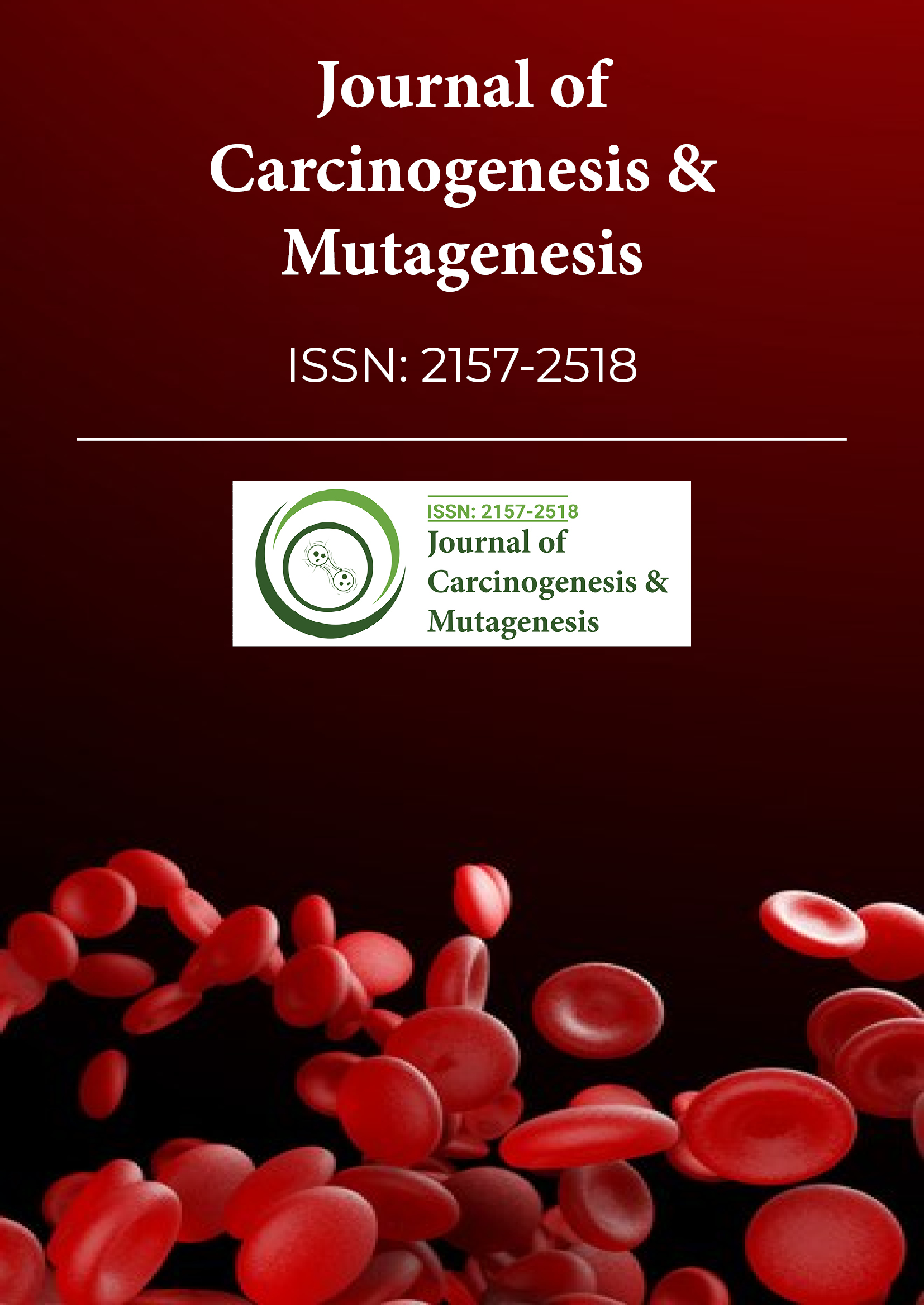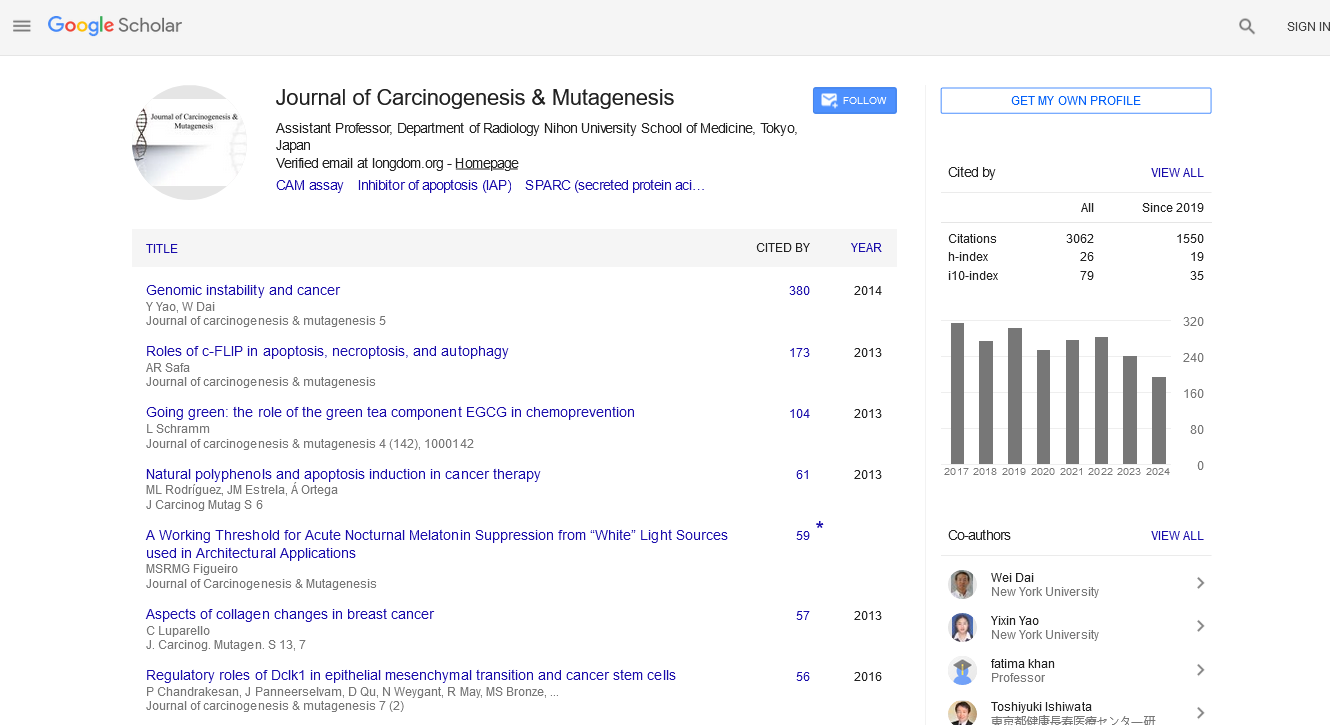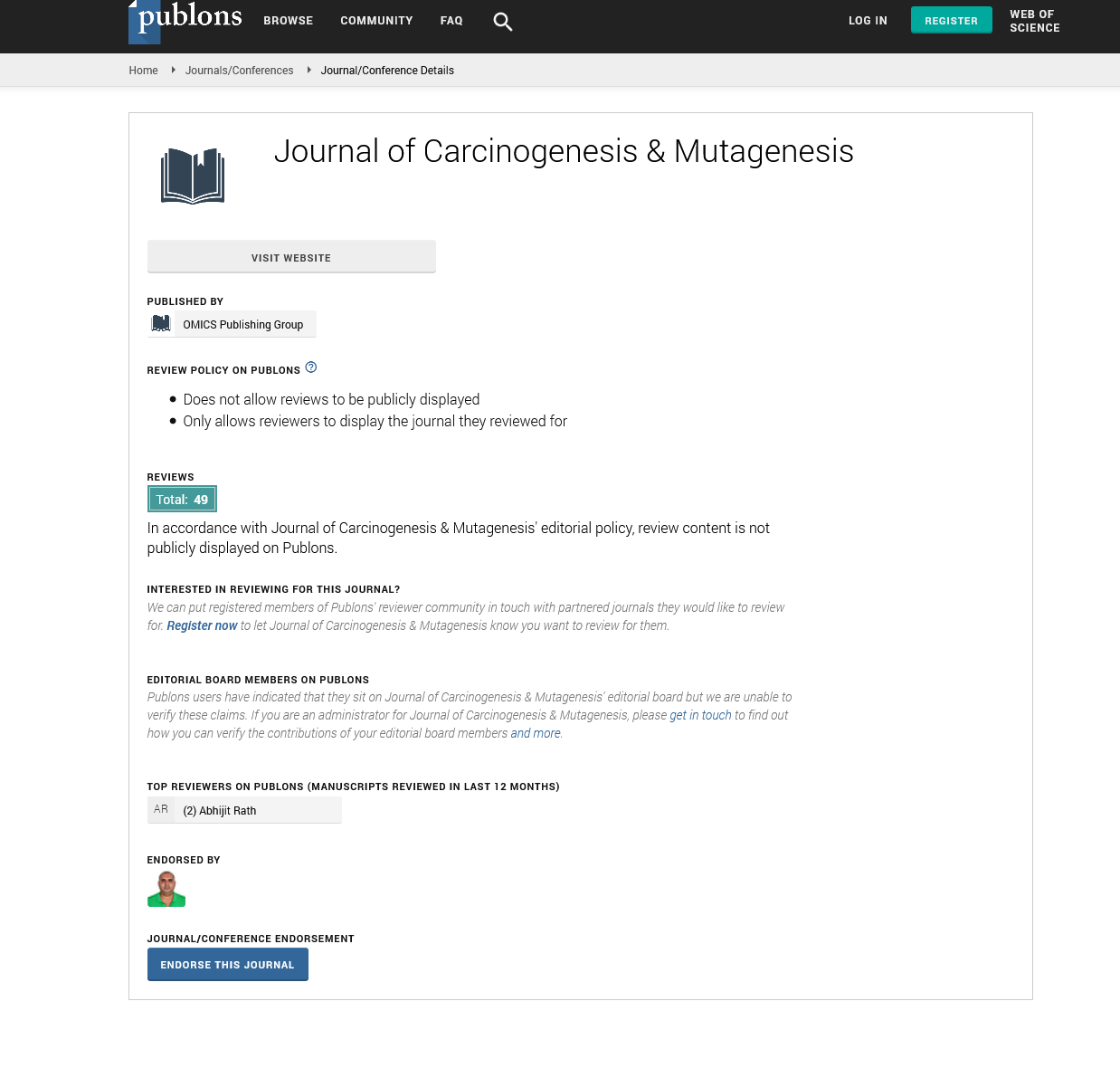Indexed In
- Open J Gate
- Genamics JournalSeek
- JournalTOCs
- Ulrich's Periodicals Directory
- RefSeek
- Hamdard University
- EBSCO A-Z
- OCLC- WorldCat
- Publons
- Geneva Foundation for Medical Education and Research
- Euro Pub
- Google Scholar
Useful Links
Share This Page
Journal Flyer

Open Access Journals
- Agri and Aquaculture
- Biochemistry
- Bioinformatics & Systems Biology
- Business & Management
- Chemistry
- Clinical Sciences
- Engineering
- Food & Nutrition
- General Science
- Genetics & Molecular Biology
- Immunology & Microbiology
- Medical Sciences
- Neuroscience & Psychology
- Nursing & Health Care
- Pharmaceutical Sciences
Commentary - (2022) Volume 13, Issue 1
Note on Treatment of Brain Cancer
Berrington Gonzalez*Received: 16-Dec-2021, Manuscript No. JCM-22-15497; Editor assigned: 20-Dec-2021, Pre QC No. JCM-22-15497; Reviewed: 03-Jan-2022, QC No. JCM-22-15497; Revised: 10-Jan-2022, Manuscript No. JCM-22-15497; Published: 17-Jan-2022, DOI: 10.35248/2157-2518.22.13.376
Description
Tumour size is less important than tumour histology and location, the brain lacks lymphatics and most of these patients die before developing metastatic disease, the commonly used tumor-node-metastasis (TNM) categorization method was found to be inadequate for brain cancers. Instead, the World Health Organization (WHO) uses four classes in its histologic classification of central nervous system (CNS) malignancies, as indicated below.
Grade: Histologic grading for CNS tumours (glioma) by the World Health Organization Grade II: Histologic grading for CNS tumours (glioma) by the World Health
Low-proliferative potential lesions having a distinct character and the prospect of cure after surgical excision alone
Subependymal large cell astrocytoma, juvenile pilocytic astrocytoma.
Second grade: Lesions that are generally infiltrating and have modest mitotic activity but recur; particular tumour types are more likely to advance to higher malignancy grades. oligodendroglioma, oligoastrocytoma, diffuse astrocytoma
Grade Three: Histological indications of malignancy, such as mitotic activity, clearly displayed infiltrative capacities.
Grade four: Mitotically active, necrosis-prone lesions that are often associated with a rapid preoperative and postoperative disease evolution.
Glioblastoma
All grades of gliomas, a type of brain tumour whose most aggressive grades are deemed malignancy, are treated with safe surgical resection. The surgical goal is gross complete resection; for tumours that may involve the eloquent brain, a less aggressive resection is used. Expectant monitoring with serial imaging is employed in certain cases when assessing risk versus benefit.
There is a lot of disagreement over treatment options, especially for grade II lesions like grade II astrocytoma. Radiation and chemotherapy treatments may differ from one institution to the next. Those listed below are therapy options that have recently been tested in clinical trials. Treatment or prophylaxis for seizures is routinely recommended.
Grade I (pilocytic astrocytomas) glioma treatment recommendations are as follows:
These uncommon lesions are usually noninvasive, benign, and potentially curable by surgery; if complete surgical removal is not possible, radiation therapy or expectant care is usually used.
Grade II astrocytomas, oligodendrogliomas, and mixed gliomas (low-grade infiltrative astrocytomas, oligodendrogliomas, and mixed gliomas):
For grade II, surgery with maximum safe resection is advised.
Patients with up to two of these are considered low risk, while patients with three or more are considered high risk. Unfavorable prognostic factors include age >40 years, astrocytoma histology, largest tumour dimension 6 cm, tumour crossing midline, and presence of neurologic deficit before resection; patients with up to two of these are considered low risk, while patients with three or more are considered high risk. In grade II-III gliomas, however, several molecular characteristics are good prognostic markers: The presence of an IDH mutation is a very positive prognostic marker for overall survival, and 1p19q codeletion correlates with greatly enhanced progression-free and overall survival.
Low-risk individuals, as well as those under the age of 40, should be monitored; high-risk patients should have fractionated external-beam radiation therapy (EBRT) or adjuvant chemotherapy.
Conclusion
For low-grade astrocytomas, the usual radiation dose is 45-54 Gy, administered in 1.8-2.0 Gy segments Unrespectable, persistent, or recurring tumours are frequently treated with postoperative radiation therapy. Chemotherapy is frequently used to treat low-grade oligodendroglias, especially those with the 1p19q deletion, which is a marker for chemotherapy sensitivity.
Citation: Gonzalez B (2022) Note on Treatment of Brain Cancer. J Carcinog Mutagen. 13:376
Copyright: © 2022 Gonzalez B. This is an open-access article distributed under the terms of the Creative Commons Attribution License, which permits unrestricted use, distribution, and reproduction in any medium, provided the original author and source are credited


